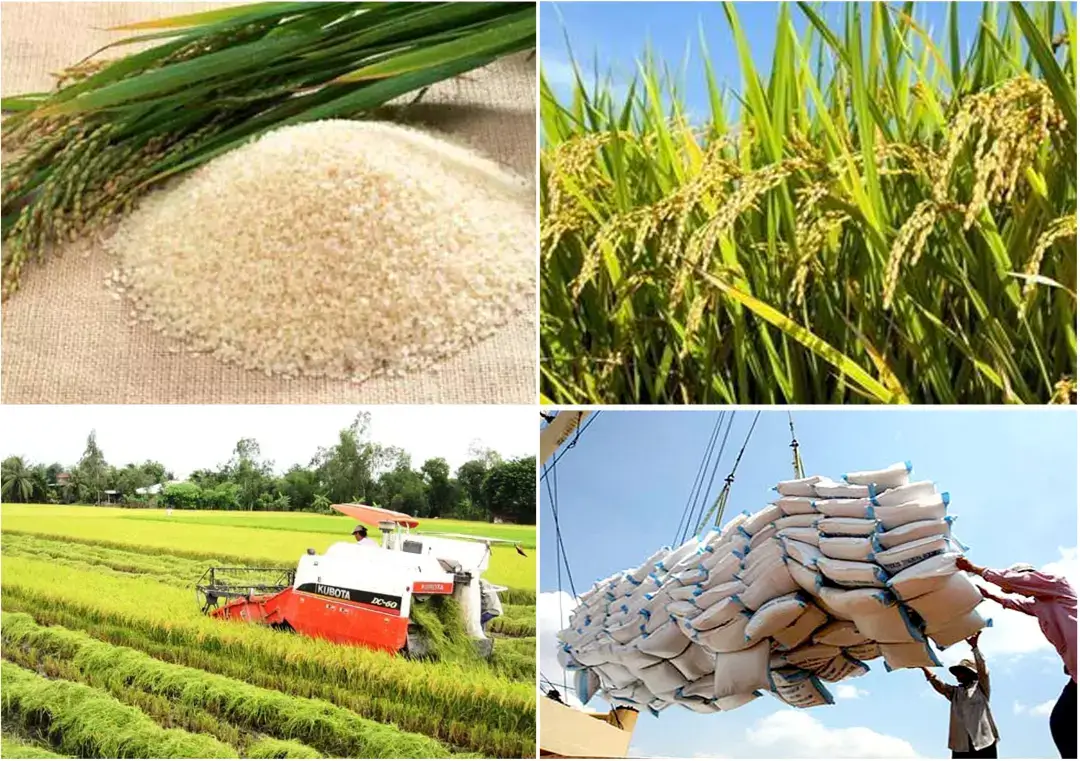Rice exports soar 49% in May
HCMC – Outbound rice shipments in May surged by a staggering 49% compared to the same period last year, at
Rice is one of the highest-yielding grains in the world, second only to corn and wheat. From 2022 to 2023, global rice milling production will be close to 512.5 million tons. The overall rice milling production is still increasing every year, reaching a peak of approximately 515 million tons from 2021 to 2022, an increase of 15% compared to 2008 to 2009.
Rice generally has similar characteristics, but more than 40,000 varieties are classified based on characteristics such as size, starch content and milling process. Global rice consumption peaked at nearly 520 million tons in 2021-2022.
Rice is a finished product made from rice seeds. In 2021, China produced approximately 213 million tons of rice, making it the world's largest rice-producing country, despite not having the largest planting area. On the contrary, the country with the largest rice planting area in the same year was India, with an area of 45 million hectares, while China had 30.8 million hectares. China and India account for approximately 50% of the world's rice production.
There are many different cultures and rice diets, but China has the largest consumption, followed by India and Bangladesh. About 65% of people in China consume rice as a standard diet. At the same time, rice is the main staple food in India, and more than half of the population consumes rice.
 However, per capita, China and India differ from the countries that eat the most rice. For example, China people only eat 107.6 kilograms of rice every year on average, while Indians eat even less. At the same time, the per capita rice consumption in the world is the highest in Laos, Cambodia, Bangladesh, Vietnam and Guyana.
However, per capita, China and India differ from the countries that eat the most rice. For example, China people only eat 107.6 kilograms of rice every year on average, while Indians eat even less. At the same time, the per capita rice consumption in the world is the highest in Laos, Cambodia, Bangladesh, Vietnam and Guyana.
Due to the high domestic consumption demand, China's rice export is relatively small, about 2.2 million tons in 2022-2023, ranking sixth in the world in quantity. At the same time, India is the world's largest rice exporter, accounting for 40% of global rice exports. By 2022, they have sold nearly 22 million tons of rice to more than 140 countries.
About half are cheap rice shipped to low-income countries such as Bangladesh, Nepal and parts of sub-Saharan Africa. The rest is high-grade fragrant basmati rice with long, thin, and inherent particle characteristics. There are about six in India. Thousands of different kinds of rice.
In contrast, China's rice imports are expected to reach 4.6 million tons this year, making it a major rice importer. The Philippines imported 3.9 million tons of rice in the same year. Vietnam is a big rice exporter but also ranks in the top ten regarding imports.
Overall, the price of rice tends to increase year by year. According to the data of the World Bank, in 2008, the rice export ban involving India, China, Cambodia and Viet Nam led to a 52% increase in global rice prices.
By 2022, the world rice price will be one-third higher than before the epidemic from 2015 to 2019 because rice stocks fell sharply during the epidemic. In addition, like other major agricultural products in the world, after the outbreak of the Ukrainian conflict in February 2022, rice prices rose because it was a substitute for major commodities such as wheat and corn.
In the first half of 2023, the world rice price will remain high. The rice price index of the Food and Agriculture Organization (FAO) will be higher than 120 points every month, while the highest point in 2022 will be 119 points.

The Food and Agriculture Organization of China (FAO) tracks the price trends of important rice in the international market by averaging the prices of important exported rice from multiple countries and scoring the rice price index based on a median of 100 points from 2014 to 2016. The rice included in the index basket includes Jasminum sambac rice (aromatic rice), Basmati rice (ordinary rice), Indian rice (ordinary rice) and some other rice.
In June, the rice price index reached 126.2 points, a decrease of 1.2% from May but still 13.9% higher than the same period in 2022. It is because rice prices in all segmented markets are falling, with either generally weak demand or limited to a few buyers, such as Indian rice. The FAO still needs to release its statistical data.
The possibility of a change in wind direction cannot be ruled out, as with the participation of India, the United Arab Emirates, and Russia, rice prices are rising due to the formation of a new round of rice export bans. At the same time, Vietnam only calls on traders to ensure sufficient supply. If more key exporters follow India's lead, the impact could push prices even higher than they were in 2008, according to the Economist.
See more:
Vietnam will import 20 million tons of coal annually from Laos
Vietnam e-commerce: A "big cake" attracts foreign investors
Vietnam tourism is becoming a 'hot spot' in Southeast Asia